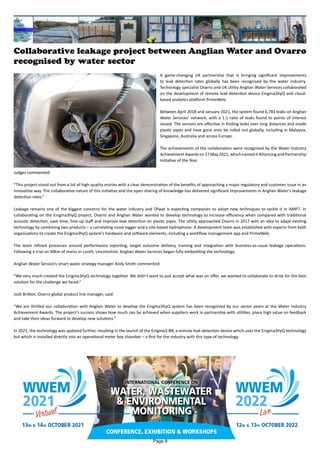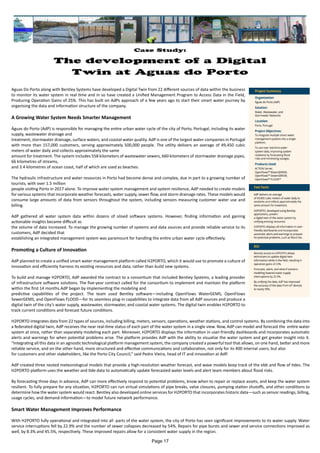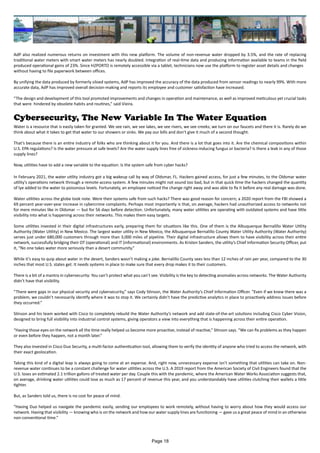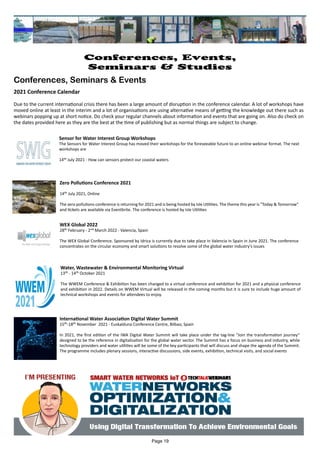The WIPAC Monthly update for June 2021 covers various industry-related topics, including ammonia compliance and energy savings, insights from the SWAN conference, and the implications of digital transformation in the water sector. It features case studies on real-time ammonia control systems and the creation of digital twins for water networks, alongside discussions on the importance of accurate data in regulatory compliance. Furthermore, it highlights key acquisitions in the water industry, such as Suez's purchase of Inflowmatix and Mueller Water's acquisition of i2o, alongside the Climate Change Committee's briefing on risks impacting UK water infrastructure from climate change.



















